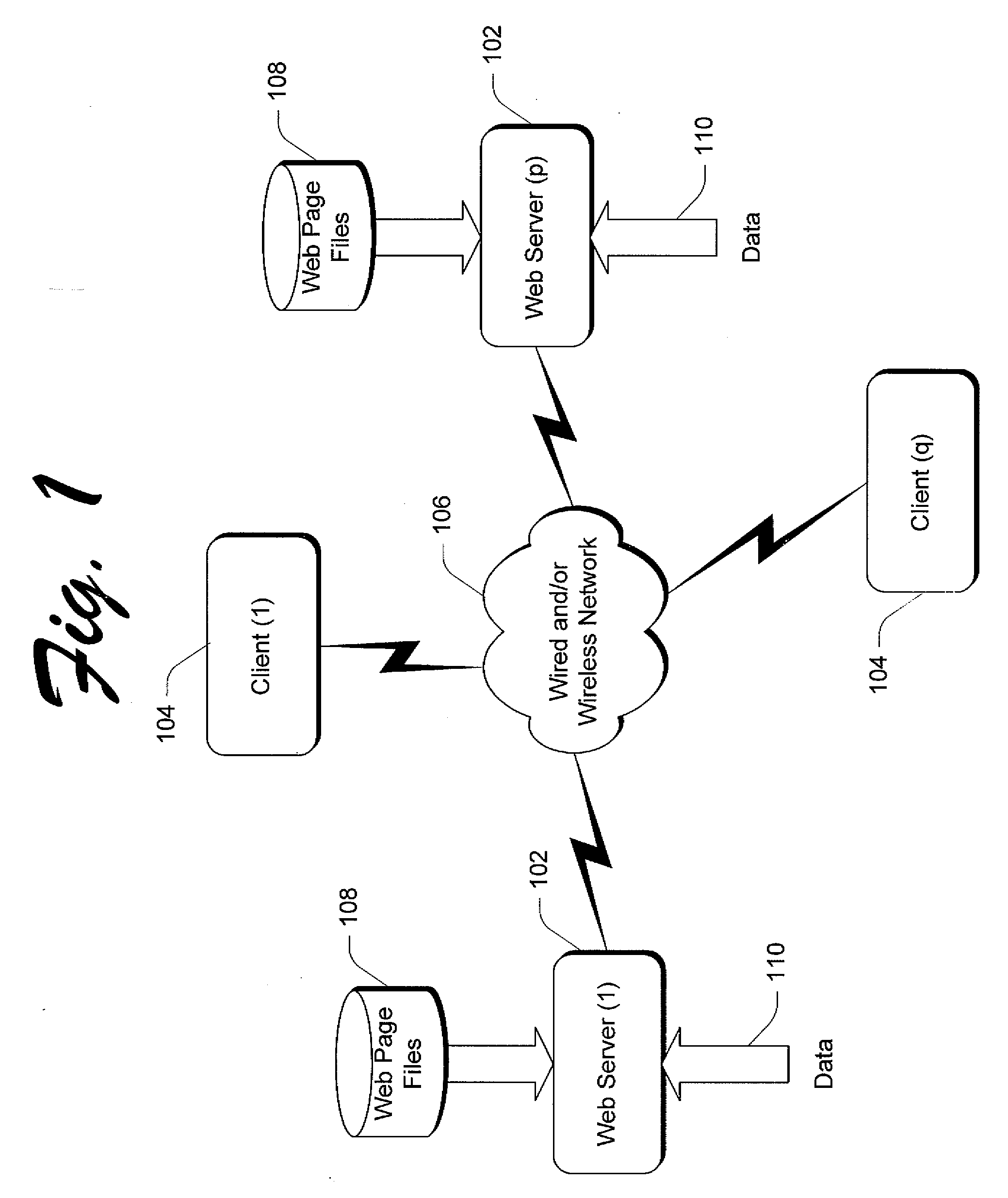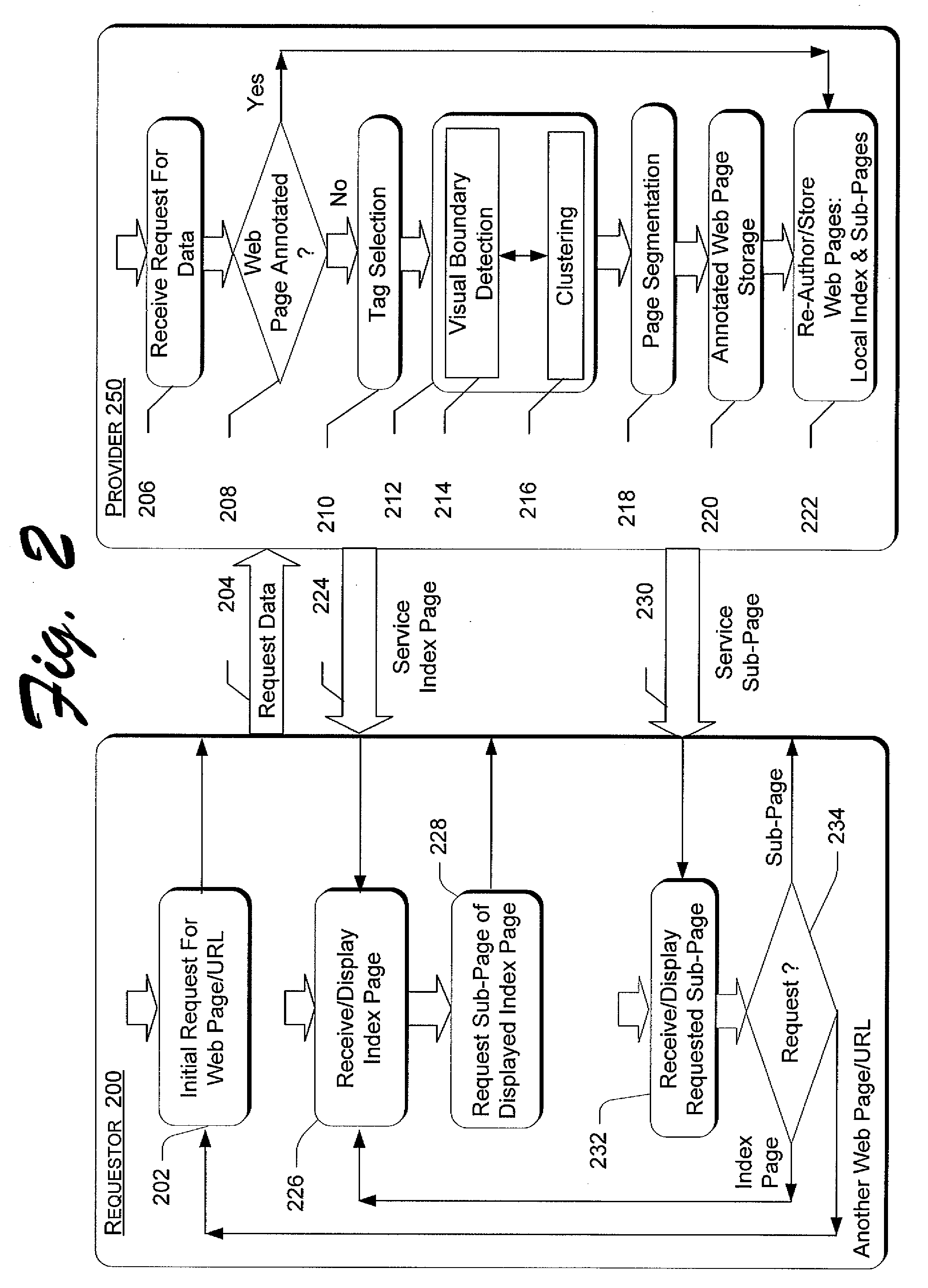Small Form Factor Web Browsing
a web browser and small form factor technology, applied in the field of small form factor web browsing, can solve the problems of limited input capabilities, tedious and time-consuming browsing procedures, and largely limited the usefulness of small form factor devices, and achieve the effect of unpleasant browsing a typical web page with these devices
- Summary
- Abstract
- Description
- Claims
- Application Information
AI Technical Summary
Benefits of technology
Problems solved by technology
Method used
Image
Examples
Embodiment Construction
[0019] Overview of Page Analysis and Presentation for Small Form Factor Devices
[0020] This patent presents a web page adaptation method of page partitioning for browsing on a small form factor device. The web page adaptation method includes processes for analyzing a web page to obtain its structure and then splitting up the web page. In the analysis process, a hierarchy of regions is created to represent the semantic and visual structure of the web page. According to this hierarchy, and the screen size of the small form factor device, appropriate blocks are selected as sub-pages.
[0021] After sub-page generation, an image index page is created to assist a user in navigating the web page. The image index page is marked with sub-pages, each of which is made up of one of more of the regions. When browsing, the user will first view a thumbnail rendering of the image index page. Then, in a bi-level browsing convention, the user can click on one of the marked sub-pages on the thumbnail o...
PUM
 Login to View More
Login to View More Abstract
Description
Claims
Application Information
 Login to View More
Login to View More - R&D
- Intellectual Property
- Life Sciences
- Materials
- Tech Scout
- Unparalleled Data Quality
- Higher Quality Content
- 60% Fewer Hallucinations
Browse by: Latest US Patents, China's latest patents, Technical Efficacy Thesaurus, Application Domain, Technology Topic, Popular Technical Reports.
© 2025 PatSnap. All rights reserved.Legal|Privacy policy|Modern Slavery Act Transparency Statement|Sitemap|About US| Contact US: help@patsnap.com



